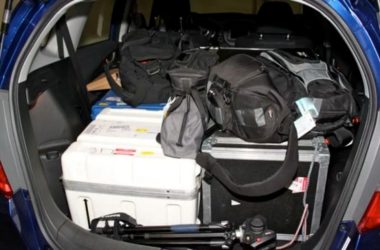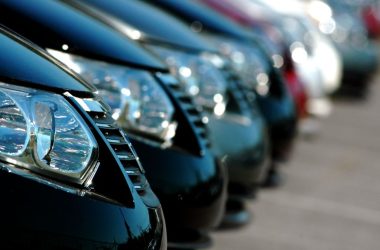The Ford Fiesta is a supermini car that has been produced by Ford since 1976. It spans seven generations over its lifetime and has been one of Ford’s most popular models globally. The Fiesta was originally designed to be affordable, fuel efficient, and fun to drive – a formula that has remained largely unchanged through its various iterations.
The first-generation Fiesta was introduced in 1976 and produced through 1983. It was a front-wheel drive hatchback available as a 2-door and 4-door model. The second-generation launched in 1983 and brought an aerodynamic redesign and new engine options. Subsequent generations introduced new styling, upgraded interiors, and improved performance while retaining the Fiesta’s core identity as a practical, economical car.
Over 50 years and seven generations, the Ford Fiesta has sold over 16 million units worldwide. It has been manufactured in Europe, Brazil, Argentina, Mexico, China, India, Thailand, and South Africa. The Fiesta continues to be an important vehicle for Ford globally, combining affordability, fuel efficiency, and nimble handling into a popular package for first-time and budget-minded buyers.
First Generation (1976–1983)
The first generation Ford Fiesta was introduced in 1976 and produced until 1983. It was initially available as a 3-door hatchback and 2-door sedan body styles. Some key details and specs of the first gen Fiesta models:
The first Fiesta was powered by a 950 cc 3-cylinder engine producing 45 hp. It had a wheelbase of 90 inches and overall length of 140.4 inches. Curb weight ranged from 1,519 to 1,628 lbs depending on model year and body style.
Major features included rack and pinion steering, front disc brakes, and a 4-speed manual transmission. One of the most innovative features for the time was the hatchback body style, which allowed easy access to a spacious cargo area despite the car’s small footprint.
In 1978, Ford added a higher-performance 1.1L (1,117 cc) engine producing 60 hp. This provided livelier performance for the small hatchback. Other variants were introduced through the first gen’s production run including a panel van and pickup truck.
According to Wikipedia, over 1 million first gen Fiestas were sold worldwide. It brought greater fuel efficiency and modern hatchback utility to the masses in an affordable package.
Second Generation (1983–1989)
The second generation Ford Fiesta debuted in August 1983. It featured a redesigned front-end and interior compared to the first generation (source). The most notable changes were the new wraparound headlights and angular body panels.
Engine options included a new 1.0 L lean-burn and 1.1 L OHV units at launch, with a 1.3 L diesel added in 1984. The Mk2 Fiesta continued the Mk1’s successful formula, but with updated styling and engineering.
In 1986, the Fiesta Mk2 received a mild facelift with changes to the front grille and interior fittings.trim levels. 1987 saw the popular Fiesta XR2 model launch, powered by a 1.6 L CVH engine capable of over 100 bhp. The XR2 provided a performance-focused variant of the economical hatchback.
Overall, the second generation Fiesta sold over 2 million units between 1983 and 1989, establishing itself globally as Ford’s popular supermini. It expanded the appeal of its predecessor through modernized styling and broader range of models.
Third Generation (1989–1997)
The third generation Fiesta was launched in 1989 and produced through 1997. The Mk3 model represented a complete redesign for the Fiesta, with more rounded styling and improved interior space. Major changes included:
New body styles introduced for the third generation included 3-door hatchback, 4-door saloon, 3-door van, and 5-door estate models. The range also included:
- Fiesta Si – Performance model
- Fiesta Flight and Fiesta Flying – Limited edition models
- Fiesta RS Turbo – High performance model
The third gen Fiesta was the first generation to feature front and rear headrests as standard. Safety was improved with side impact bars added as standard in 1990. Under the hood, engine options ranged from 1.0L to 1.6L petrol engines, and a 1.8L diesel. The Mk3 Fiesta enjoyed strong sales through its lifespan, cementing its position as one of Ford’s most popular models.
Fourth Generation (1995–2002)
The fourth generation Ford Fiesta was launched in October 1995 and featured an all-new design and engine range.[1] It became Britain’s best-selling car from 1996 to 1998, before being overtaken by the Ford Focus.
The Mk4 Fiesta was hugely popular in Europe, known for its superior handling and ride quality compared to rivals. By 1998, it had sold over 2 million units across Europe and 4 million worldwide. The Mk4 model won particular praise for its integrated design and attention to detail.
There were various trim levels available including the sporty Zetec S model which featured a 1.4L 16v engine. Special edition models like the Si, Vi, Ghia and Flight also offered additional equipment and unique styling.
In 1998, the Fiesta received a facelift which refreshed the exterior and interior. Under the hood, an improved 1.25L and 1.4L Zetec SE engines were introduced, delivering smoother power delivery.
The Mk4 Fiesta continued Ford’s run of success in the critical European small car segment. Its quality, driving dynamics and popularity with customers helped boost the brand’s sales and reputation.
[1] https://en.wikipedia.org/wiki/Ford_Fiesta_(fourth_generation)
Fifth Generation (2002–2008)
The fifth-generation Ford Fiesta was introduced in 2002 and manufactured until 2008. This generation marked some key improvements in safety and technology for the popular subcompact car.
In terms of safety, the fifth-generation Fiesta was the first model to feature an anti-lock braking system and passenger airbags as standard [1]. However, by today’s standards, the safety features were fairly basic. The 2019 Fiesta, for example, offers no automatic emergency braking, blind-spot monitors, or active lane control [2]. So while the fifth-gen Fiesta represented an improvement in safety at the time, later generations have far surpassed it with more advanced driver assistance technologies.
In addition to the new safety features, the fifth-generation Fiesta saw upgrades in technology like the introduction of Bluetooth phone connectivity and voice control features. There were also improvements in powertrain options, with new diesel and petrol engines aimed at providing better fuel efficiency and performance.
Sixth Generation (2008–2017)
The sixth generation Fiesta was unveiled at the 2008 Geneva Motor Show in March, and introduced to the North American market for the 2010 model year. The redesigned Fiesta featured a number of updates and changes compared to previous generations.
According to Wikipedia [1], the sixth generation model continued Ford’s Kinetic Design philosophy, with more sculpted body panels. It also had a futuristic interior design, with features like a molded plastic dashboard. The sixth gen Fiesta was 3 inches longer and 6 inches wider than the previous model. It was offered in both 3-door and 5-door body styles.
This generation also saw the introduction of the electric Fiesta ECOnetic model in 2010. It had a lithium-ion battery pack and was able to travel up to 50 miles on battery power alone according to Ford’s tests [1]. The ECOnetic model represented Ford’s push into more fuel efficient and electric vehicles.
Overall, the sixth generation Fiesta marked a major update in terms of design, dimensions, and powertrain options compared to earlier versions of the popular Ford supermini.
Seventh Generation (2017–Present)
The seventh generation Ford Fiesta debuted in 2017 as a 2018 model year vehicle. This latest generation introduced an all-new exterior and interior design, advanced safety technologies, and upgraded powertrain options.
The exterior features a sleeker, more aerodynamic design with a lower, wider stance compared to previous generations. Ford introduced its new trapezoidal grille shape on the Fiesta. Inside, the Fiesta received an updated interior with soft-touch materials and available leather upholstery.
Engine options include a 1.0L EcoBoost turbocharged three-cylinder petrol engine and 1.5L EcoBoost four-cylinder petrol engine. Six-speed manual and automatic transmissions are available. Fuel economy reaches up to 47 mpg highway.
New driver assist safety features include Pre-Collision Assist with Pedestrian Detection, Blind Spot Information System, Lane Keeping Aid, and adaptive cruise control. The Fiesta continues to perform well in safety ratings, earning Top Safety Pick status from the IIHS.
According to Ford (Ford Fiesta (seventh generation) – Wikipedia), over one million Fiesta models had been produced worldwide by early 2018, demonstrating the continued popularity of the long-running Fiesta nameplate.
Awards and Recognition
The Ford Fiesta has won numerous awards and accolades over its lifetime for its performance, design, and value. Most recently, the seventh generation Fiesta ST won over 20 awards worldwide in its debut year, cementing its reputation as Ford’s most decorated performance subcompact ever made.
Notable awards won by the Fiesta ST include Automobile Magazine’s 2014 All-Star, Top Gear’s Hot Hatch of the Year 2013, and Auto Express’s Hot Hatch of the Year 2013. It was also named What Car?’s Hot Hatch of the Year for three consecutive years from 2014 to 2016.
The sixth generation Fiesta also collected many honors when it debuted, including the AJAC Car of the Year for Best New Small Car in 2011 and 2012. Earlier generations of the Fiesta were renowned for their efficiency and economy, winning the Economical Supermini of the Year award four times in the 1980s.
Clearly, the Fiesta’s combination of performance, practicality, and value has resonated with auto critics and journalists for decades. With Ford continuing to innovate and improve the Fiesta line, it seems likely the model will continue earning awards well into the future.
Future Outlook
In June 2022, Ford announced that it will end production of the Fiesta in June 2023 to make way for an all-electric SUV that will be built in its factory in Cologne, Germany (https://electrek.co/2023/06/30/ford-to-end-fiesta-production-next-week-for-electric-explorer-suv/). After 47 years and eight generations, the final Ford Fiesta is expected to roll off the production line on July 7, 2023.
The discontinuation of the Fiesta comes as Ford shifts its focus to electric vehicles, autonomous technology, and larger SUVs. The compact hatchback segment has been declining in recent years as buyers shift to crossovers. Ford plans to launch its first mass-market EV for Europe in 2023, followed by four additional electric models by 2024. The company aims for its European passenger vehicle sales to be all-electric by 2030.
While the Fiesta nameplate is being retired, industry experts speculate Ford may eventually launch a new electric subcompact model to replace it. This would likely feature the latest battery range and charging capability to make it appealing to urban buyers. Autonomous driving features are also expected to proliferate into smaller vehicle segments in the coming decade.
For now, the discontinuation of the Fiesta marks the end of an era for Ford’s fun and functional small car. Over nearly 50 years and more than 7 million units sold, the Fiesta brought affordable mobility to drivers around the world. Though its time has passed, the Fiesta leaves behind a legacy as one of Ford’s most iconic and popular models worldwide.



